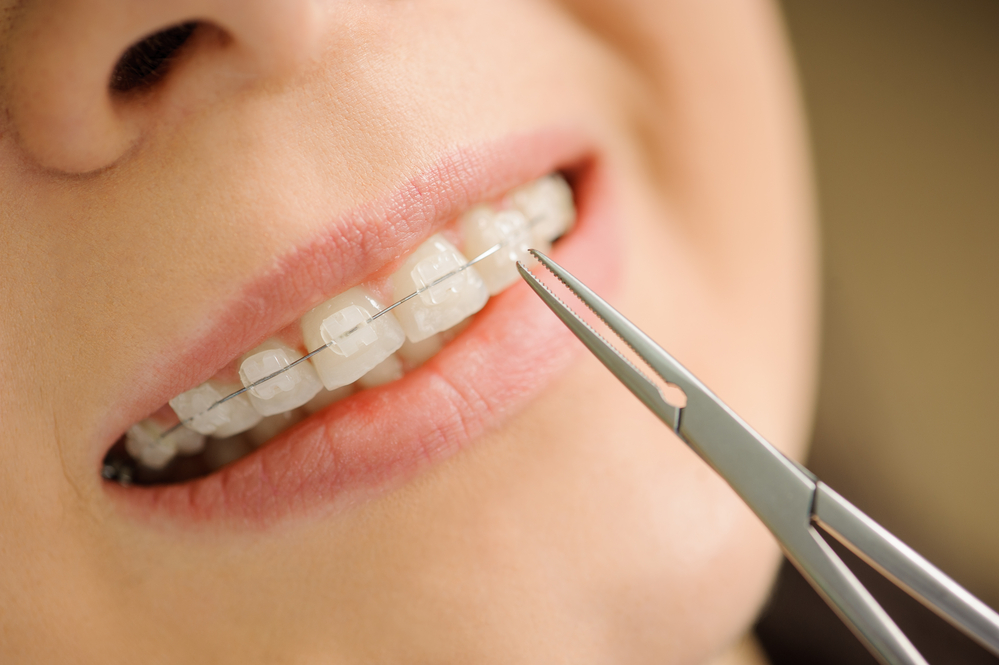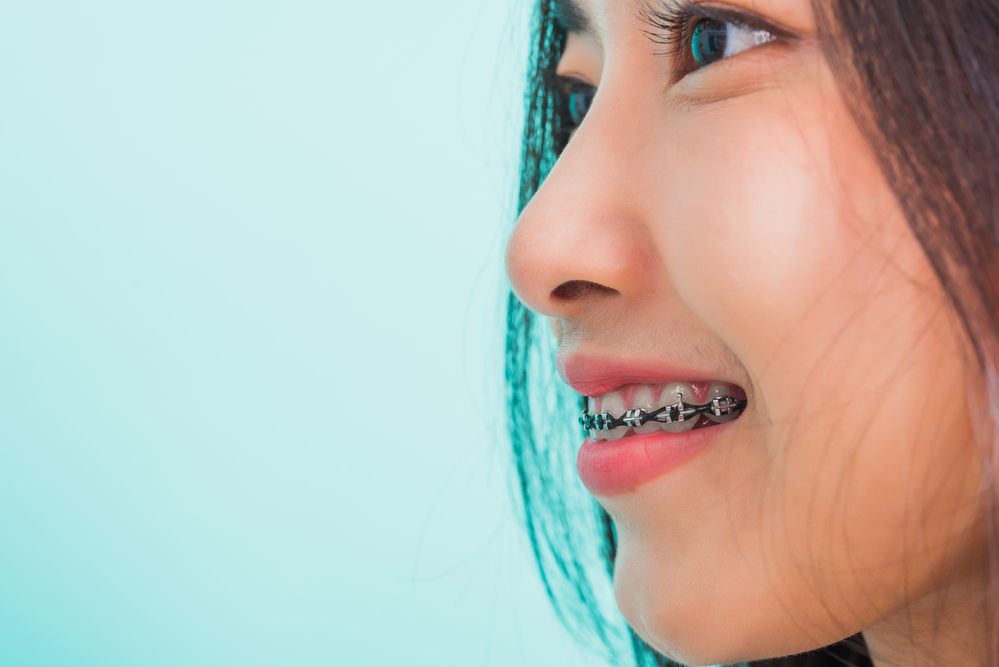Choosing between clear braces vs. metal braces for straightening your teeth is a big decision. Both types work well to fix issues like crooked teeth, overbites, underbites, gaps, and more. But, they’re different in how they look and feel, so it’s a good idea to learn about both before deciding.
Either way, braces can be expensive and you’ll be wearing them for a while, so we’ll help make sure you pick the right ones for you.
What Is the Difference Between Clear Braces vs. Metal Braces?

Metal braces are what most people think of when they hear the word braces. These are typically made with stainless steel, and the orthodontist uses bonding material or cement to apply a metal bracket to the front of each tooth. A flexible wire connects the brackets, and elastic bands help to hold the wire in place. The orthodontist tightens this wire regularly to move the teeth to their desired position.
Clear braces work in the same manner as metal ones; however, the material that makes up clear braces is usually ceramic. The brackets are tooth-colored or clear, and the wire and elastic bands are also tooth-colored.
Some people mistakenly think that clear braces refer to clear aligners, such as Invisalign. However, they are not the same, and they realign the teeth in different ways.
What Are the Similarities Between Clear and Metal Braces?
The mechanism of moving and straightening the teeth is the same for both types of braces. About every four to six weeks, the orthodontist will use a device to tighten the wire that connects the brackets. After each tightening, wearers of both clear and metal braces may experience discomfort and pain for a couple of days.
Individuals of both types of braces have food limitations, so this is not a factor when choosing between clear braces vs. metal braces. They should avoid eating sticky or hard foods, such as hard candy, gum, taffy, caramel, and popcorn. If they want a hard fruit or vegetable, they should cut it into smaller pieces before consuming it.
Which Braces Are Better?
Both clear and metal braces have their advantages, but deciding which one is better when choosing between clear braces vs. metal braces depends on what is most important to you.
Aesthetics
One of the pros of clear braces is that they are less noticeable than traditional metal braces. Adults appreciate they are more subtle in appearance.
However, metal braces can allow for some fun individualization. Younger orthodontic patients often like switching out the traditional elastic bands for colorful ones.
Cost
If keeping your budget lower is a priority, metal braces are a better choice because they are less expensive than clear ones.
The materials used are one reason clear braces are more expensive. Other reasons are the treatment time is often longer, and there is a greater chance of damage, which means you may need to pay more to replace a ceramic bracket.
Severity of Orthodontic Issues
Both clear and metal braces are effective for many orthodontic problems, such as rotated or crooked teeth, bite issues, and gaps between teeth. However, metal braces are better for more complex scenarios.
Durability
When looking at clear braces vs. metal braces, it’s important to know metal braces are more durable. The stainless steel material is almost impossible to damage. Although clear braces have improved over the last 20 years, they are still more prone to damage and breakage.
Comfort
Individuals who have worn both metal and clear braces report that clear braces are a bit more comfortable to wear. This is likely because the material used is not as bothersome to the cheeks or gums.
Do Clear Braces Take Longer Than Metal?

Clear braces do take longer to get a patient’s teeth to the desired alignment in most cases.
The materials used for clear braces are not as strong as metal braces, so the alignment process is slower as they cannot be tightened as much each visit. It takes 12 to 36 months for metal braces alignment but can take more than three years for clear braces alignment. It may take even longer if there is a need for repairs or replacement.
What Are the Negatives of Clear Braces?
The main negatives of clear braces when comparing clear braces vs. metal are cost, durability, length of treatment, and staining.
Although there are several advantages of clear braces, some of the cons include:
- Expense: If you want discreetness, you will have to pay for it. Among the ceramic material, length of treatment, and maintenance, clear braces often cost $1,500 to $3,000 more than metal ones.
- More prone to damage: Ceramic is more fragile, so it is common for a bracket to break or chip. This increases the total cost and treatment time.
- Longer process: Because of the fragility of clear braces, it takes longer for them to correct orthodontic issues. In certain situations, it may take one to two years longer than metal braces would take.
- Dental hygiene is more difficult: The brackets of clear braces tend to be bigger than metal ones. This makes it more difficult to brush and floss around them. As a result, there may be more dental or gum issues.
- Staining: The ceramic material is prone to staining. You can minimize this by avoiding dark-colored foods and beverages and brushing them thoroughly.
Although the elastic bands are more likely to stain, these are easy and inexpensive to change out.
What Are the Negatives of Metal Braces?
The biggest disadvantage of metal braces is their appearance. Some people, especially adults, feel self-conscious about having a mouth full of metal.
Some users of metal braces also say they can be irritating or painful, especially after they are first applied.
Who Can Help Me Make a Decision Between Clear Braces vs. Metal Braces?
If you need more help deciding between clear braces vs. metal, our team at Peterson Family Orthodontics can discuss the pros and cons in more detail. If you are in the San Tan Valley area, contact us to schedule a free consultation to discuss your orthodontic options.

